Palermo its full of traditions. We are proud of our dishes. I have already spoken to some traditional Sicilian dishes, I shared with you the recipes of sfincione, the arancini, the cassata, the Sardinian warbler and pasta with sardines, but still there I spoke of the bread, fritters and croquettes (or cazzilli).
But what are these fritters?
The fritters are a kind of “pancakes” made with chickpea flour and fried in hot oil. Prepare them is not difficult, but the process is a bit ‘long.
Today, you will find “panellari” (ie people with banquets vendors selling only bread fritters and croquettes) in every corner of the city.
This is one of those foods that, if you go to Palermo, you should definitely try, but if at the time you do not plan on traveling in my town, you’ll have to try to prepare them at home .. you’ll love it, I’m sure.

Ingredient
- 500 grams of chickpea flour
- 1.3 liters of water
- parsley
- Salt and pepper
- Sunflower oil
Proceeding
In a poy mix water and flour together making sure that no lumps are formed.
Now add salt and pepper, then mix again all the ingredients.
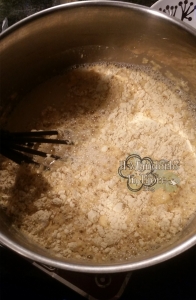
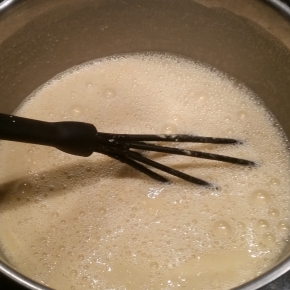
Place the pot on the fire by setting it low intensity and stir constantly with a wooden spoon. Try not to attack the mixture on the bottom.
Keep stirring until you get a creamy, smooth and compact.
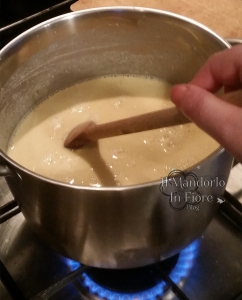
Now add the parsley and mix well together.
Turn off the heat.
Now you have to create the fritters. Spread the chickpeas cream on a flat plate for pizza on top of oven paper (thickness should be 2-3 cm).
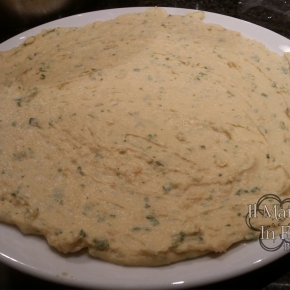
Put the dish in the freezer for 30-40 minutes, when the mixture has almost frozen, take off from the freezer and cut it in square. Gently detachment from the plate and place it in a container (trying not to put too tight) one on top of the other, interposing a sheet of oven paper between each layer and the other. Put back in the freezer and the day after fry in plenty of boiling seed oil
The fritters are eaten in a sandwich-type “mafaldine” along with “crocchè” (or “cazzilli”). Inside you can also squeeze a few drops of lemon
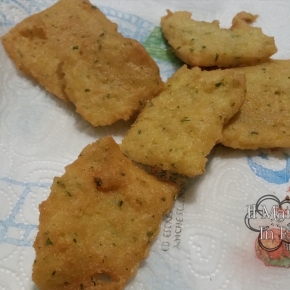
The Crocchè (or cazzilli)
The croquettes (or cazzilli), are the potato croquette.
I admit I was scared when I prepared for the first time, so I was afraid that they would break when they hit the hot oil, but all this did not happen. Actually they are very simple to prepare. The secret to the perfect crocchè is to choose the right potato, which takes into better shape.
The old potatoes are perfect for this purpose, then I’ve kept in the refrigerator for a whole night and I just dipped in hot oil maintained their shape perfectly, and the quality is assured.
Ingredients:
- 1 pound of potatoes old
- Salt and pepper
- 3 teaspoons cornstarch
- parsley
- Seed oil for frying
Proceedings
Peel the potatoes and boil them in a pot full of water, when they are ready drein them. Mash the potatoes.
Add the parsley, the cornstarch, salt and pepper. The mixture should be moist and not well modeled by hand.
Shape the croquettes like a little cilinder and place it on a plate and let rest in the fridge several hours before fry
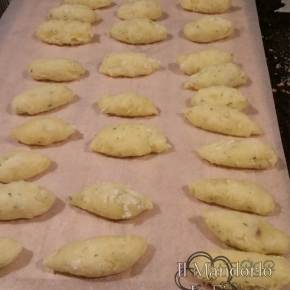
Translated by: Corinne Niccoli